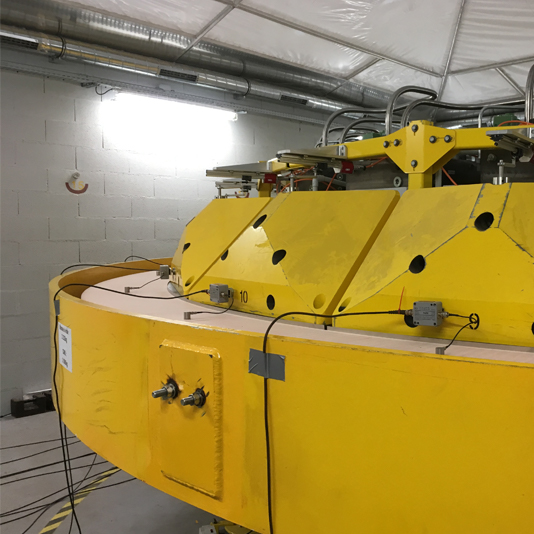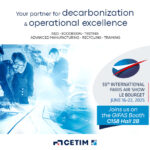CNIM, an equipment manufacturer, asked Cetim to carry out acoustic emission testing of its structures in addition to its compression and relaxation tests on composite rings for the ITER nuclear fusion programme.
The goal of the ITER collaborative project and its tokamak prototype is to demonstrate the scientific and technical feasibility of nuclear fusion as a means of large-scale energy production. The ITER tokamak will ultimately be the largest experimental fusion facility in the world. The Fusion For Energy organisation (F4E) – in charge of the Europe’s contribution to the project – enlisted the expertise of many companies, including CNIM. The French equipment manufacturer manufactured composite rings, five meters in diameter, which will hold the toroidal field coils of the reactor together. In service, these parts will absorb significant forces to help support the resistance of the coils. CNIM designed a customised machine which evenly applies very high loads in order to validate the performance of the rings. “Each ring was subjected to a thrust force of up to 33,000 tons, that is four times the force that would be needed to lift the Eiffel Tower”, disclosed Rémi Besson, head of the ITER programme at CNIM.
To supplement its tests, the manufacturer called on Cetim’s non-destructive testing expertise in the field of acoustic emissions and composite materials. The aim was two-fold: firstly identify the risks of fracture within the material and secondly set up a monitoring device that could be reproduced upon commissioning of the tokamak.
Adapting its methodes
Although Cetim was accustomed to these types of tests, it had to adapt its methods due to the unprecedented size of the parts which were a lot thicker (30 cm) than those it normally tests. “We set up piezoelectric sensors that were used to monitor the entire structure. We also had to process the signals in order to eliminate background noise emitted by the machine”, explained Catherine Hervé, acoustic emission expert at Cetim.
This method made it possible to monitor in real time any developing defects within the material – the early warning signs to failure. Two types of tests were carried out, namely compression and relaxation tests over a period of two months. These analyses did not detect any problem and therefore validated the sound manufacture of the rings. The parts have since been delivered to ITER for which the first experiments are scheduled for 2026.
Cetim’s asset
Cetim offers tailored experimental approaches by adapting its non-destructive testing and composite material know-how to the customer’s test framework and to any constraints it may have.
Cetim will display its innovative Composite solutions & services at JEC WORLD 2022 – 3/5 May – Paris Nord Villepinte – on booth F06 – Hall 6.
To book a meeting with our experts during the show : please click here
For more information on our solutions and services, please contact:
Tel.: +33/970 821 680
sqr@cetim.fr



